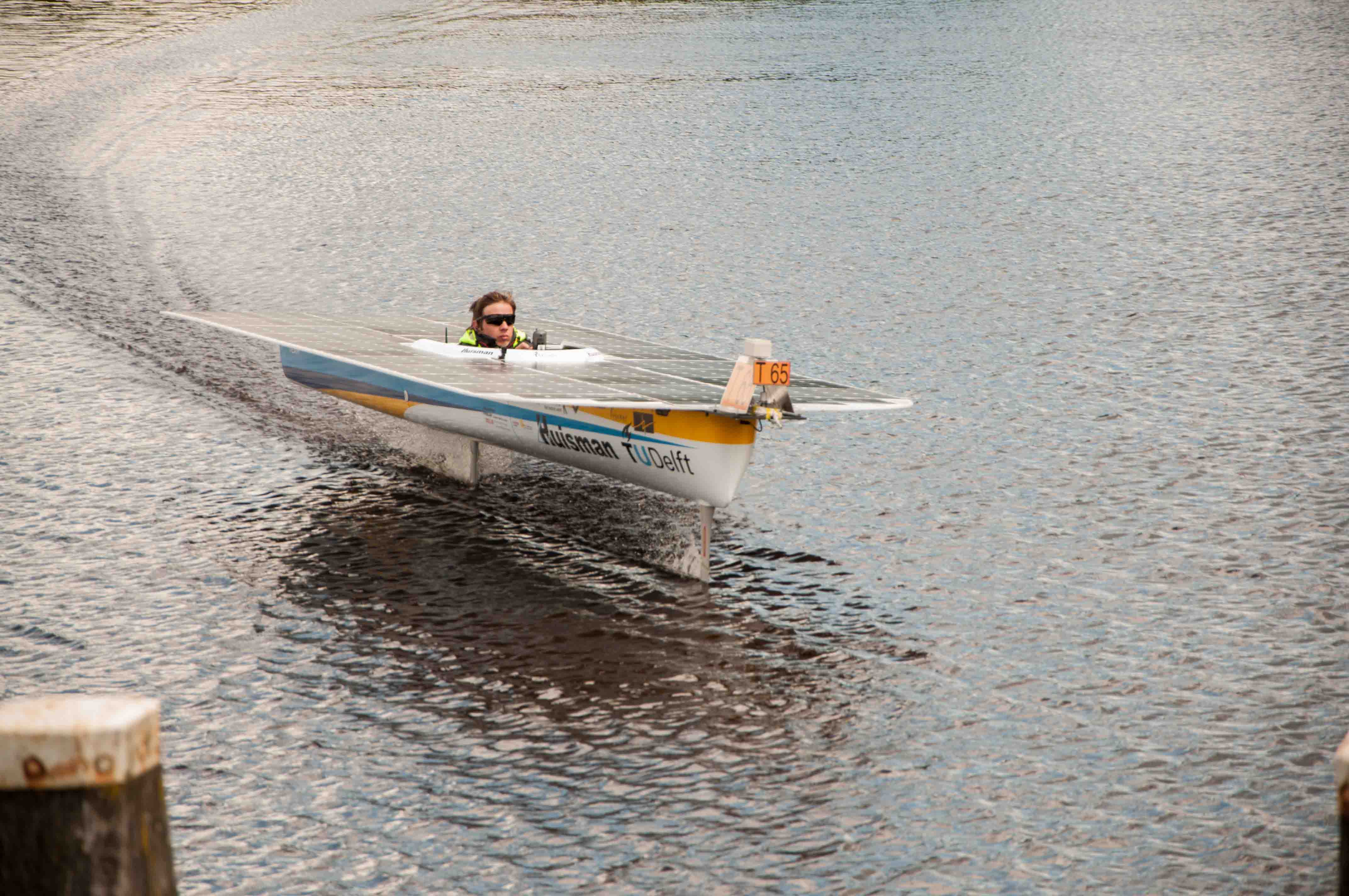
The TU Delft Solar Boat Team (now Hydro Motion Team) was founded in 2006 to show the potential of solar power for vessels and to enable students to gain experience in running a real-life engineering project. The Solar Boat Team competed in races that had strict requirements on the maximum allowed solar energy, so efficiency was key. This is why, from 2010 onwards, the team has used hydrofoils to reach much higher speeds with the given power.
Flying Fish team members Gerben, Johan, Gijs and Gijsbert have spend a full-time year in the Solar Boat Team of 2014. In this team, Gerben was responsible for the technical design, while Gijs was responsible for the electronics. Johan and Gijsbert were responsible for the hydrofoils. They designed and built two hydrofoils with an inverted T-shape, placed on the centerline of the hull. The boat has a so-called canard configuration, meaning that the rear foil carries most of the weight of the boat and the front foil is mainly used for stability control. The front vertical strut serves as a rudder and is used for steering the boat, while the rear strut features a pulling propeller just above the rear foil.
Two new features in the 2014 boat have been developed by future Flying Fish engineers. The first new feature is the use of bicycle principles to control the roll and yaw of the boat: by using the front rudder like the steering wheel of a bike, the boat could fly upright on only two struts without tipping over. So, the pilot needs to balance and steer the boat by using only a single steering input. This approach has been the basis of further hydrofoil dynamics research by Johan and Gijsbert.
The second new feature is the electronic height control system. A combination of sensors is used to determine the height and vertical speed of the boat. This data is fed to a microcontroller, which controls a servo actuator in the hull. With an actuation mechanism, this servo sets the angle of the front wing. This control loop works at a rate of approximately 10 Hz and has proven to keep the boat stable.
In 2016, an even better boat was built by a team that included future Flying Fish engineers Casper, Thore and Laurent. While this team re-used the bicycle dynamics concept and the canard configuration, they improved the stability of the boat. This was done by reducing the strut length, placing the front and rear foil further apart and by adding a pitch trim mechanism in the rear foil. This way, the boat could fly stably and horizontally even in windy conditions. Also, the drag of the boat was reduced by creating smaller mechanisms in the struts.
After the Solar Boat team, Johan and Gijsbert further developed their hydrofoil dynamics theory before founding Flying Fish.
The boat built in 2014 now stands proudly on display in front of the Flying Fish office, while the boat from 2016 can be seen at the Dutch Maritime Museum in Rotterdam! Flying Fish remains a proud sponsor of the Hydro Motion Team.
(Photos and videos courtesy of TU Delft Solar Boat Team / Hydro Motion Team.)
In case you are interested in learning more about our hydrofoil design or electric propulsion, do not hesitate to get in touch with our engineers.
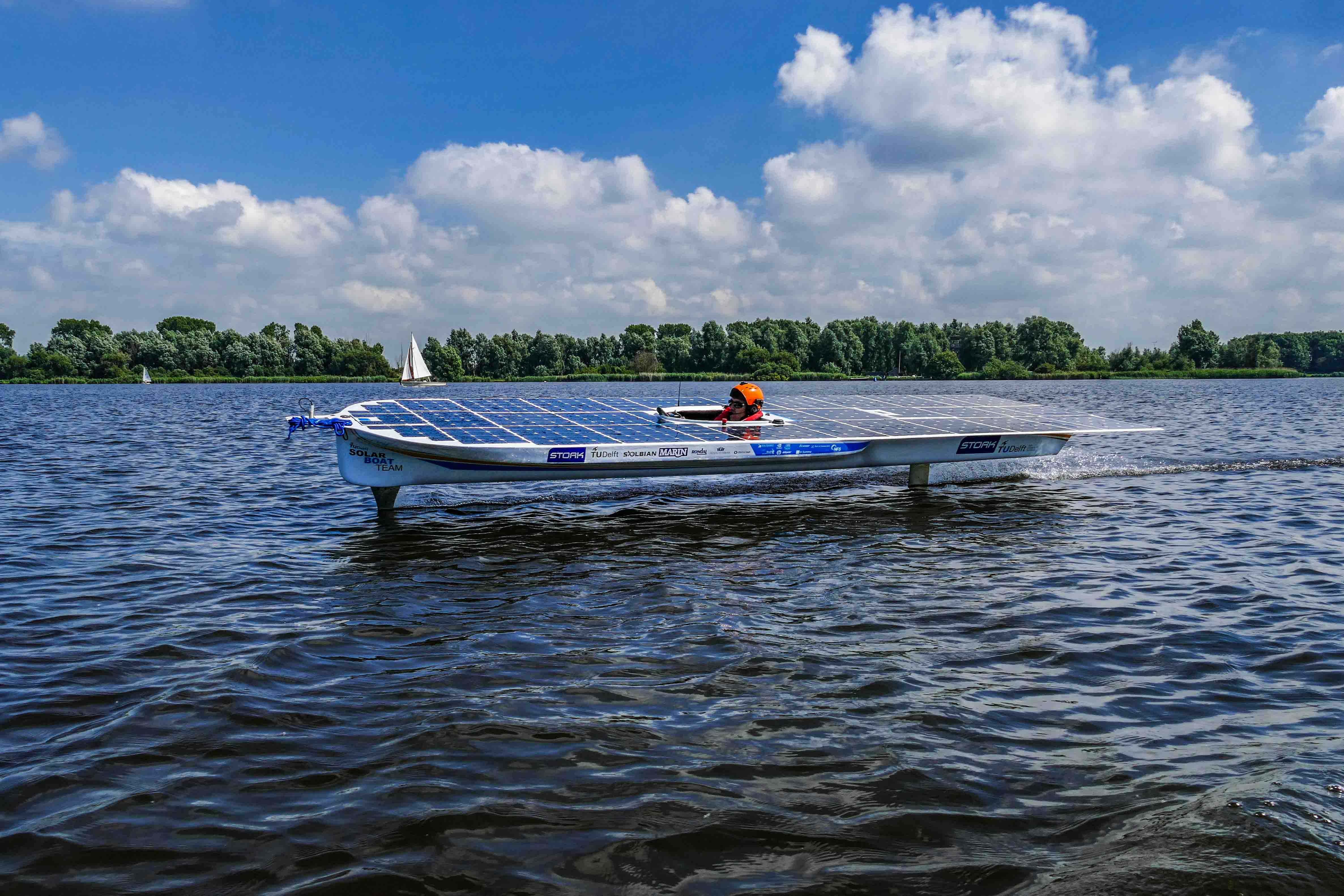

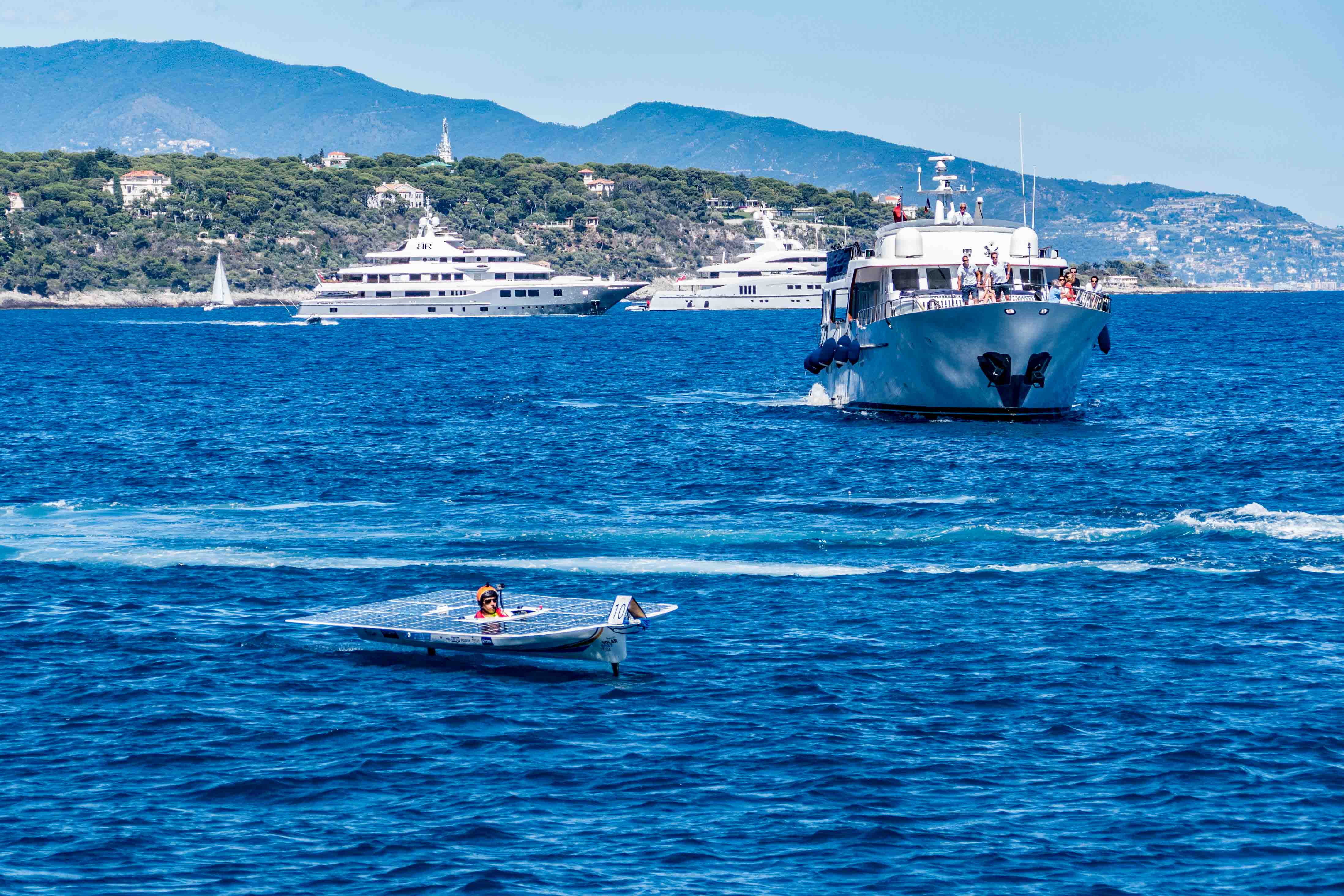
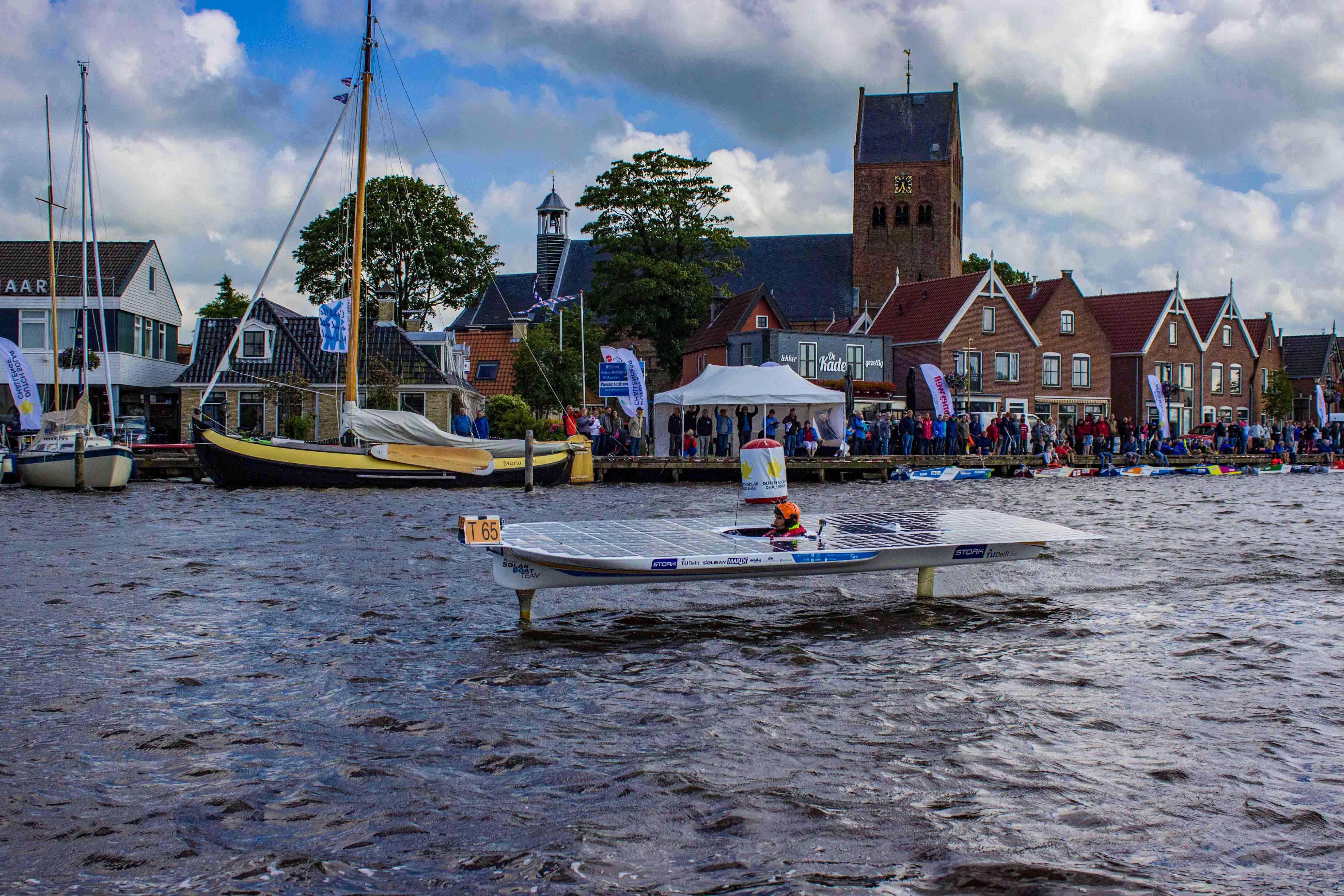


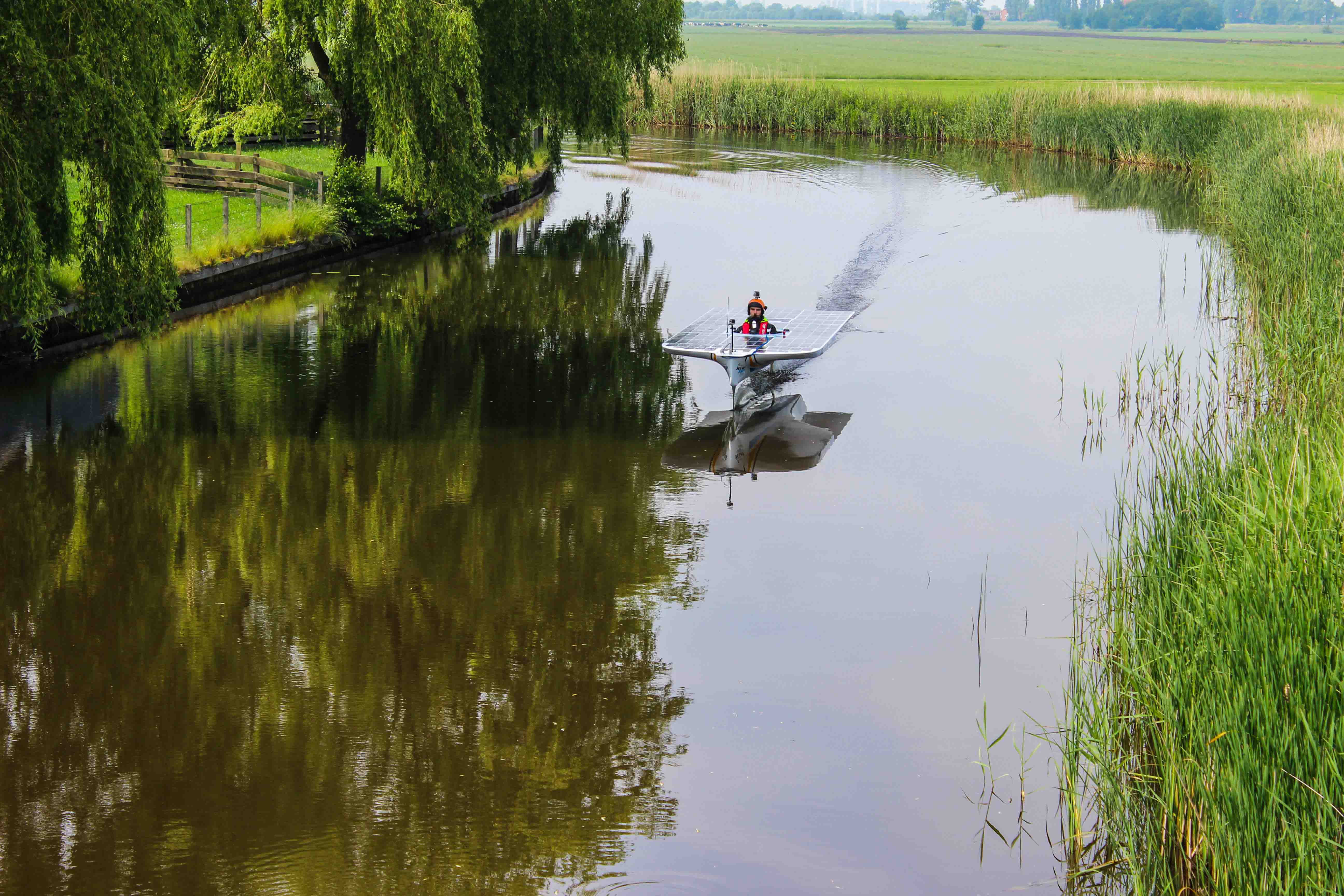

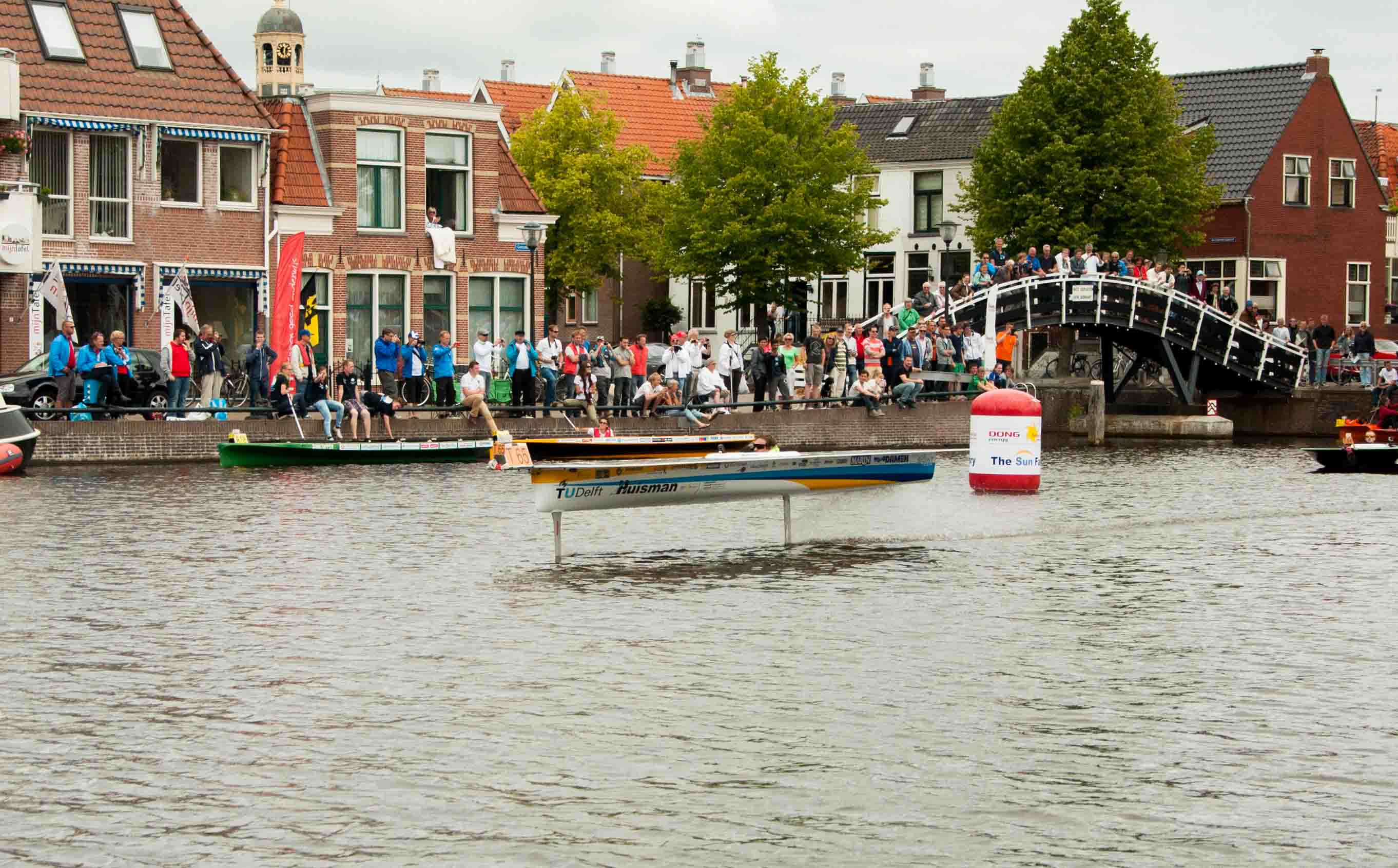
Contact us
Thank you for your interest in Flying Fish. Feel free to reach out to us.
We're always open to answer your questions through a friendly conversation.



